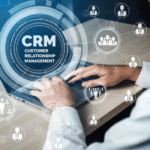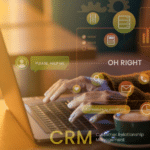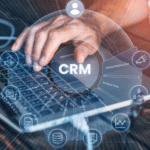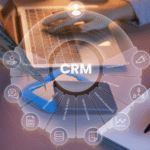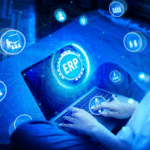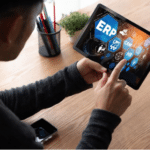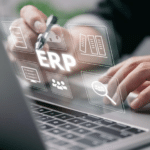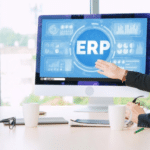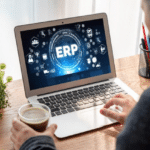Managing an Enterprise Resource Planning (ERP) project requires careful planning, effective communication, and meticulous execution. As ERP implementations can be complex and challenging, mastering project management techniques is essential for ensuring success. In this guide, we’ll explore some valuable tips and tricks to help you navigate the intricacies of ERP project management and achieve your project goals.
1. Establish Clear Objectives and Goals
Begin by establishing clear objectives and goals for the ERP project. Define the scope of the project, identify key deliverables, and outline success criteria. Engage stakeholders from across the organization to ensure alignment and consensus on project objectives. Establishing clear goals provides a roadmap for the project team and helps to keep everyone focused on achieving desired outcomes.
2. Develop a Comprehensive Project Plan
Develop a detailed project plan that outlines all tasks, milestones, timelines, and dependencies. Break down the project into manageable phases, such as planning, implementation, testing, and deployment. Assign roles and responsibilities to team members and establish communication channels for collaboration and coordination. A comprehensive project plan serves as a roadmap for the project team and helps to track progress and manage resources effectively.
3. Engage Stakeholders and Obtain Buy-In
Engage stakeholders from all levels of the organization throughout the ERP project lifecycle. Communicate regularly with executive sponsors, department heads, end-users, and external partners to provide updates, solicit feedback, and address concerns. Obtain buy-in and commitment from stakeholders by demonstrating the benefits and value of the ERP system and how it aligns with organizational goals and objectives.
4. Conduct Thorough Requirements Analysis
Conduct a thorough requirements analysis to understand the needs and preferences of end-users and stakeholders. Gather input from various departments and functional areas to identify business processes, workflows, and system requirements. Document user stories, use cases, and functional specifications to guide system configuration and customization. A comprehensive requirements analysis ensures that the ERP system meets the needs of the organization and delivers tangible benefits.
5. Leverage Best Practices and Standards
Utilize industry best practices and standards for ERP project management to guide decision-making and execution. Follow established methodologies, such as Agile, Waterfall, or Hybrid, based on the project’s characteristics and requirements. Adopt standardized processes, templates, and tools for project planning, risk management, and quality assurance. Leveraging best practices ensures consistency, efficiency, and quality throughout the ERP implementation process.
6. Manage Change Effectively
Anticipate and manage change effectively throughout the ERP project lifecycle. Communicate openly and transparently with stakeholders about the impact of changes on timelines, budgets, and deliverables. Implement change management processes to assess, prioritize, and address change requests in a structured manner. Provide training and support to end-users to facilitate adoption and minimize resistance to change. Effective change management ensures smooth transitions and maximizes the success of the ERP implementation.
7. Prioritize Data Migration and Integration
Prioritize data migration and integration efforts to ensure a seamless transition to the new ERP system. Develop a comprehensive data migration strategy that includes data cleansing, validation, and mapping from legacy systems to the new ERP platform. Establish integration protocols and interfaces to connect the ERP system with other business applications, databases, and external systems. Test data migration and integration processes rigorously to ensure data accuracy, consistency, and integrity.
8. Conduct Rigorous Testing and Quality Assurance
Conduct rigorous testing and quality assurance activities throughout the ERP project lifecycle to validate system functionality and performance. Develop test cases, scenarios, and scripts to verify that the ERP system meets specified requirements and user expectations. Perform unit testing, integration testing, system testing, and user acceptance testing to identify and address defects, errors, and issues. Iteratively refine the system based on feedback and test results to ensure readiness for deployment.
9. Ensure Ongoing Support and Maintenance
Plan for ongoing support and maintenance of the ERP system beyond the initial implementation phase. Establish support channels, such as helpdesk support, user forums, and knowledge bases, to address user questions and issues post-implementation. Provide training and resources to enable system administrators and support personnel to troubleshoot and resolve problems effectively. Monitor system performance, user feedback, and emerging trends to identify opportunities for optimization and enhancement.
10. Foster Continuous Improvement and Innovation
Foster a culture of continuous improvement and innovation within the organization to drive long-term success with the ERP system. Encourage feedback, ideas, and suggestions from end-users and stakeholders for enhancing system usability, functionality, and performance. Establish governance processes and mechanisms for prioritizing and implementing system enhancements, upgrades, and new features. Embrace emerging technologies and trends to leverage the full potential of the ERP system and stay ahead of the competition.
By applying these tips and tricks, you can master ERP project management and successfully navigate the complexities of ERP implementation. Remember to prioritize communication, collaboration, and stakeholder engagement to ensure alignment and drive project success.

